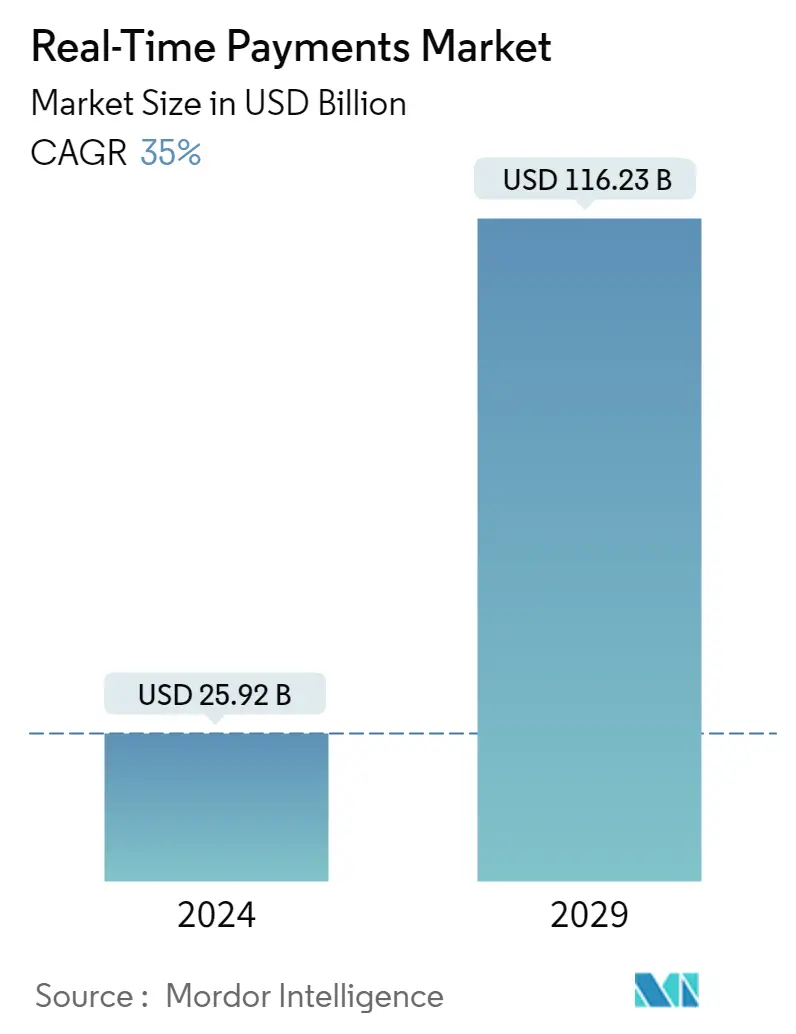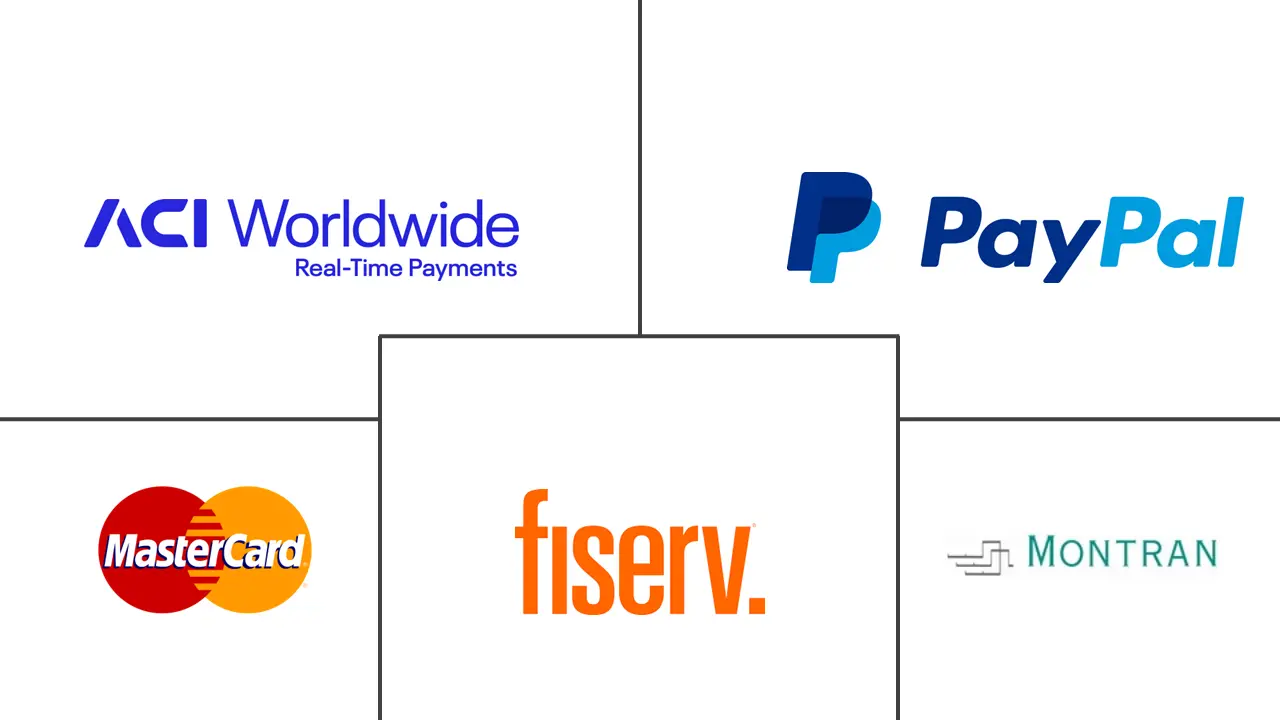Market Size of Real-Time Payments Industry

| Study Period | 2019 - 2029 |
| Market Size (2024) | USD 25.92 Billion |
| Market Size (2029) | USD 116.23 Billion |
| CAGR (2024 - 2029) | 35.00 % |
| Fastest Growing Market | Asia-Pacific |
| Largest Market | North America |
Major Players
*Disclaimer: Major Players sorted in no particular order |
Need a report that reflects how COVID-19 has impacted this market and its growth?
Real Time Payments Market Analysis
The Real-Time Payments Market size is estimated at USD 25.92 billion in 2024, and is expected to reach USD 116.23 billion by 2029, growing at a CAGR of 35% during the forecast period (2024-2029).
Real-time payments typically focus on low-value retail payment systems (RPS); they differ from real-time gross settlement systems (RTGS) and distributed ledger payment systems. In addition to meeting the demands and expectations, real-time payments have generated interest from regulators, competition authorities, and payment service providers. Regulators believe that instant payments will expand access to banking services, support economic growth, provide alternatives to Visa/Mastercard networks and reduce the use of cash and cheques.
- There is rapid growth in the global Real-Time Payment (RTP) ecosystem, with businesses and governments realizing the benefits of implementing faster, more efficient payment systems. Currently, over 70 countries on six continents support real-time payments, with USD 195 billion in transaction volume this year, presenting a year-on-year growth of 63%, according to ACI Worldwide's March 2023 report.
- The growing penetration of smart devices and booming online retail commerce across the world are driving the rapid adoption of real-time payments. Increasingly, demanding consumers are turning to their smartphones when they need to pay merchants, billers, peers, and others.
- The increasing focus on using advanced technologies and new business models in the Fintech sector, like open API-enabled real-time payment systems using mobile applications, has contributed to market growth. As per a study by Finastra last year, Baas (Banking as a Service) is expected to grow by 25% over the next three years, providing various features to users embedded in the system like real-time payment, retail banking, etc., and 86% players in the market are planning to adopt open APIs to enable available banking capabilities.
- The COVID-19 pandemic resulted in increased use of digital payments across the world. According to the Global Findex Database 2021, in low and middle-income economies (excluding China), more than 40% of adults who made merchant in-store or online payments by using a card, phone, or through the internet did so for the first time since the start of COVID-19.
- However, with real-time payments gaining widespread adoption, there is a significant increase in the risk of fraud. With most payment types, a customer has the ability to recall a payment made in error before it is processed. However, an instant payment is completed in a few seconds, and as it is irrevocable, the payer cannot cancel the transaction. Such factors increase the challenges in combating fraud in the case of real-time payments.
